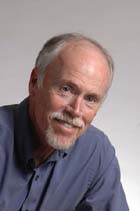The 13th IASTED International Conference on
Control and Applications
CA 2011
June 1 – 3, 2011
Vancouver, BC, Canada
KEYNOTE SPEAKER
Control of Multi-Vehicle Autonomous Systems
Abstract
This talk reviews the early work in automated vehicles at UC Berkeley. It describes a transition from automated systems that could perform a set of tasks defined by a human to autonomous systems that can be asked to perform far more complicated tasks and can accomplish them independent of further instruction from a human controller. The Berkeley architecture and algorithms for cooperative UAS search and target detection is presented. First the need for a component based system architecture is stressed and recent applications are presented. Our current mission definition language that we are developing, the Collaborative Sensing Language (CSL), is discussed and recent changes to it are outlined. Next our task allocation algorithm, which is optimization based is, is outlined. Finally our recent work in distributed data fusion, applied to the cooperative search problem is discussed. Recent experiments at Camp Roberts, CA that demonstrate autonomous searching will be shown.Biography of the Keynote Speaker

Professor Hedrick is the James Marshall Wells Professor of Mechanical Engineering at the University of California at Berkeley. He teaches graduate and undergraduate courses in Automatic Control Theory. Before coming to Berkeley he was a Professor of Mechanical Engineering at MIT from 1974-1988, where he served as Director of the Vehicle Dynamics Laboratory.
He received his B.S. in Engineering Mechanics from University of Michigan (1966), M.S. in Aeronautical and Astronautical Engineering from Stanford University (1970), and Ph.D. in Aeronautical and Astronautical. Eng., Stanford University (1971).
His research focuses on the application of advanced control theory to a wide variety of vehicle dynamic systems including automotive, aircraft and ocean vehicles. He is currently the Director of Berkeley's Vehicle Dynamics Laboratory as well as the PI of the Office of Naval Research center at Berkeley, the Center for the Collaborative Control of Unmanned Vehicles.
He served as the Chair of the Mechanical Engineering Department at UC Berkeley from 1999-2004. He served as the Director of the University of California PATH Research Center, a multi-disciplinary research program located at the Richmond Field Station from 1997-2003. PATH conducts research in a variety of advanced transportation areas including advanced vehicle control systems, advanced traffic management and information systems and technology leading to an automated highway system.
His research has concentrated on the development of nonlinear control theory and on its application to a broad variety of transportation systems including automated highway systems, power train control, embedded software design, formation flight of autonomous vehicles, and active suspension systems. The active suspension laboratory at UC Berkeley is the only full scale, half car test facility in the US.
He has offered short courses on active and semi-active suspensions, nonlinear control theory, automated highway systems, and unmanned vehicle systems in the US and in Europe.



















